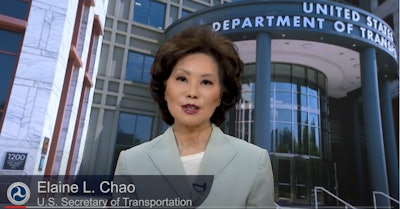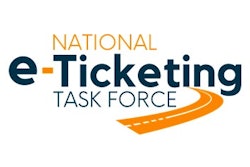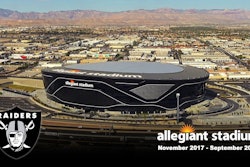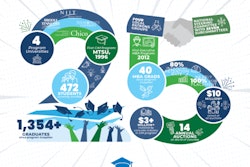
The Every Day Counts (EDC) program promotes the accelerated use of tools, technologies and methods nationwide to improve road and bridge projects, reduce cost and shorten their time to completion.
“Every Day Counts is a key Department initiative that provides state, local, and Tribal transportation leaders with opportunities to learn about ready-to-deploy innovations that best fit their individual needs,” says U.S. Transportation Secretary Elaine L. Chao.
Since the creation of “Every Day Counts” in 2010, FHWA has worked with state, local and Tribal governments, as well as federal agencies to widen the use of dozens of innovations that lead to better roads, bridges and highways, reduced project delivery times and more cost-effective transportation improvements. Later this year, FHWA will hold three virtual summit meetings, focused on “People,” “Products,” and “Process,” to discuss the EDC-6 innovations in more detail.
“This round of innovations has incredible potential to help agencies with limited resources deliver projects more effectively, improve safety, and support the nation’s economic recovery,” says Federal Highway Administrator Nicole R. Nason.
The solicitation for EDC-6 ideas this year generated more than 100 suggestions and comments from stakeholders across the country. The seven innovations selected are:
Crowdsourcing to Advance Operations – Transportation agencies are increasing their situational awareness using crowdsourcing, which enables them to cost-effectively improve the real-time management of traveler information, traffic incidents, work zones, traffic signals and more. With crowdsourced data, agencies can capture in real time travel information from a wider array of sources than currently possible. The benefits of crowdsourced data include improved travel reliability, fewer crashes and other safety improvements, and a reduction in costs associated with installing and maintaining additional data-gathering road sensors.
e-Ticketing and Digital As-Builts – State departments of transportation (DOTs) and other agencies use these methods to more efficiently gather, share and manage the massive amounts of data generated by a typical highway construction project. Converting paper-based systems for project materials tickets into electronic ones, known as “e-Ticketing,” improves the tracking, exchange and archiving of construction materials information. e-Ticketing also improves safety by reducing inspector and work crew interaction with traffic and construction equipment. More than a dozen state DOTs, including Minnesota, Missouri, and Pennsylvania, currently use e-Ticketing for construction contracts. Digital “as-builts” are modern project information models that capture data about utilities and other valuable construction information to support future operations, maintenance and asset management, and create a digital twin of an agency’s transportation system. State DOTs in Michigan and Colorado use digital as-builts to improve worker safety by identifying the exact locations of potentially dangerous underground utilities.
Virtual Public Involvement (VPI) – Soliciting public input during the transportation decision-making process helps to identify issues and concerns that can be addressed or modified early in the process. VPI allows state DOTs to do so more effectively by using technology platforms to increase the number and variety of methods for engaging the public, obtaining feedback and considering comments. For reasons related to the nation’s current health crisis, several states have begun to use VPI, and the Iowa Department of Transportation has gone further in developing a web-based tool to compile public comments throughout all phases of project delivery.
Next-Generation Traffic Incident Management (NextGen TIM) – While crashes and other traffic incidents increase risk to first responders and the traveling public, they also contribute to most traffic delays. NextGen TIM helps state DOTs and other responder agencies improve their use of public safety computer-aided dispatch systems, unmanned aircraft systems, crowdsourced data and virtual TIM responder training. Leveraging NextGen TIM, law enforcement agencies such the sheriff’s offices in Maricopa County, Arizona, and Tippecanoe County, Indiana, as well as state DOTs in Oregon and Maryland, have reduced incident detection, road closures and overall incident clearance times by more than 30 percent. With this impressive new technology, local officials are improving responder and traveler safety.
Strategic Workforce Development – Demand is high for highway workers who are adept at using technologies to transform design, construction and maintenance of transportation projects. FHWA supports the use of innovative new efforts to strategically develop the workforce new innovative strategies that help identify, train, and place individuals who make up a vital element in the nation’s essential workforce. From 2016-2018, FHWA partnered with the U.S. Labor Department’s Employment and Training Administration and others to conduct a 12-city pilot that explored how various industries can collaborate to improve recruitment, training and retention of highway workers. The effort led to “Identify, Train, Place,” a highway construction workforce development playbook that can help expand the highway contractor workforce. Similar efforts, like the Alabama Road Construction Training Course, the Denver WORKNOW Navigator Program and the Future Road Builders Gaming App, reflect the growing awareness of a need to expand a skilled highway workforce to meet the needs of the future.
Targeted Overlay Pavement Solutions – Agencies are getting the most out of operations in which new material is placed over an existing pavement structure by using data to target areas where limited maintenance resources can be used for maximum gain. Coupled with innovative materials and performance-enhancing methods that reduce the impact on traffic by construction, targeted overlay pavement solutions help state DOTs maximize their highway investments. For example, the Utah Department of Transportation applies stone-matrix asphalt as an overlay because of its proven durability and performance.
Ultra-High Performance Concrete (UHPC) for Bridge Preservation and Repair – Agencies have used UHPC for bridge construction for years, especially when connecting prefabricated bridge elements. Now, more state DOTs than ever are using UHPC on bridge preservation and repair projects because it offers superior strength and durability. It also provides innovative cost-effective solutions for improving and preserving bridge conditions. Between 2016-2019, state DOTs in Delaware and Florida repaired or strengthened more than 20 bridges using UHPC.
More information on EDC can be found at https://www.fhwa.dot.gov/innovation/everydaycounts/.



















